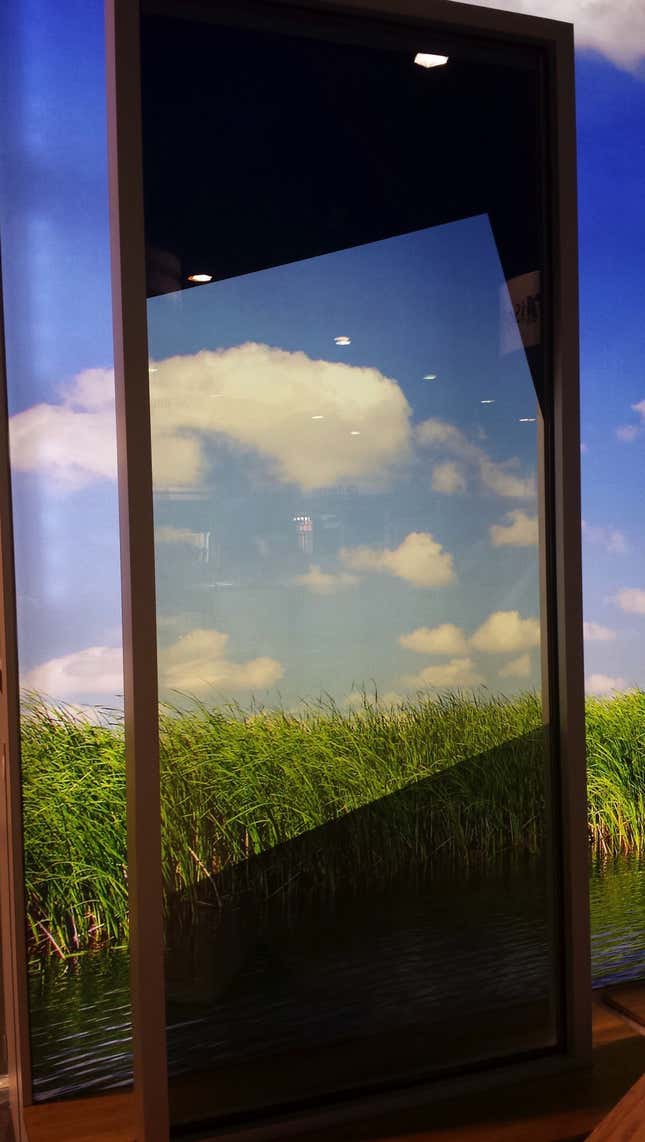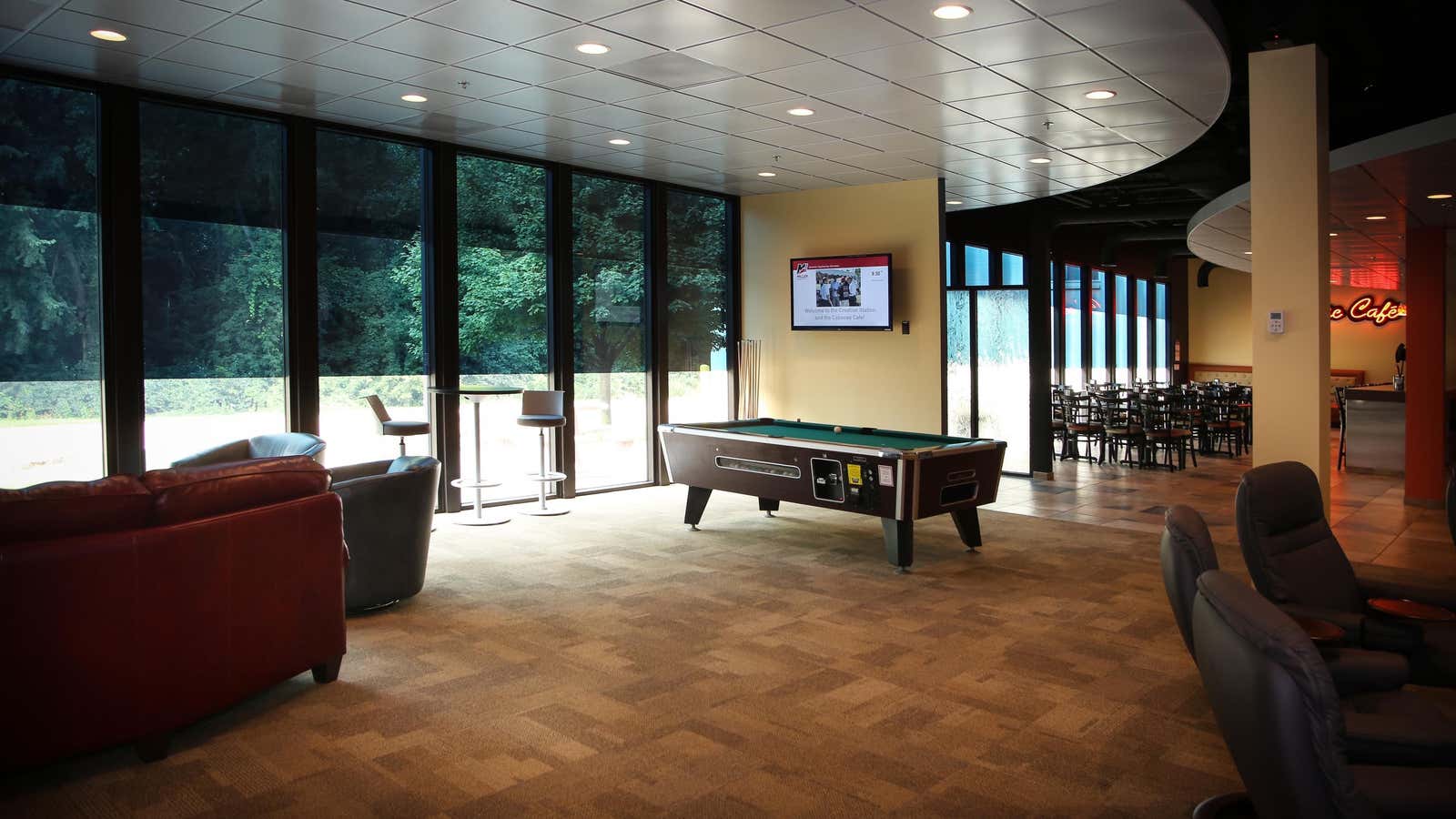Many people, especially those of us who work in offices, spend too much time indoors. One fix is to simply get outside more. Another is to offer cooped-up office workers views and light from outside. That’s part of the reason that architects nowadays tend to cover office buildings with glass.
The downside of giant banks of windows or glass walls, though, becomes obvious when the relentless afternoon sun makes the heat and stuffiness inside intolerable, requiring clammy and environment-damaging levels of air conditioning.
The makers of “smart glass” say they can address this problem. Smart-glass windows transform from transparent to opaque, and every shade in between, in seconds. They often rely on electrochromic thin films embedded in the glass.
The upshot: Less energy is needed to heat or cool a building. Shades and blinds become optional.
The Minnesota-based smart glass company Sage Electrochromics has already developed ways to vary the tint within one window—allowing the top third of a window to be heavily tinted, the middle somewhat tinted, and the bottom clear, for example.
It’s now taking that technology a step further. Last week, at the American Institute of Architects convention in Atlanta, the company showed a prototype of smart glass that can work not only in sections, but in shapes. So instead of just rectangular or square blocks of light, you could instantaneously adjust your window for beams slanting through triangles, diamonds, and trapezoids, each independently controlled for the desired tinting. A tinted window, then, could have one non-tinted triangle letting in a sunbeam in the middle.
The product is still in development, but here’s a photo of a prototype.

Sage CEO Alan McLenaghan explained the development (video, start at 0:56) to trade journalists at the convention.
Where it gets really interesting is the intersection of smart glass and the internet of things—the connected objects and devices that are quickly infiltrating homes, as well as other places.
Sage recently launched a mobile app that lets users control the tinting of entire windows, or sections of them, with their smartphones.
The glass can also be programmed to tint automatically in response to changing light conditions. And with the new development, Sage noted, customers will be able to tint-control shapes and patterns created by architects and designers.
That’s the idea, anyway. Last November a Guardian report on the California-based smart glass company View shed some light on the technology behind smart glass, and its market potential. One challenge, it noted, is that smart glass is considerably more expensive than regular glass, about five to six times the price (though energy savings over time could help counter that). Another is that architects are in general a risk-averse lot (nobody gets fired for using regular windows).
Still, View CEO Rao Mulpuri told Forbes that even if smart-glass makers capture only a small portion of the overall glass market, they could create a market worth $100 billion.
